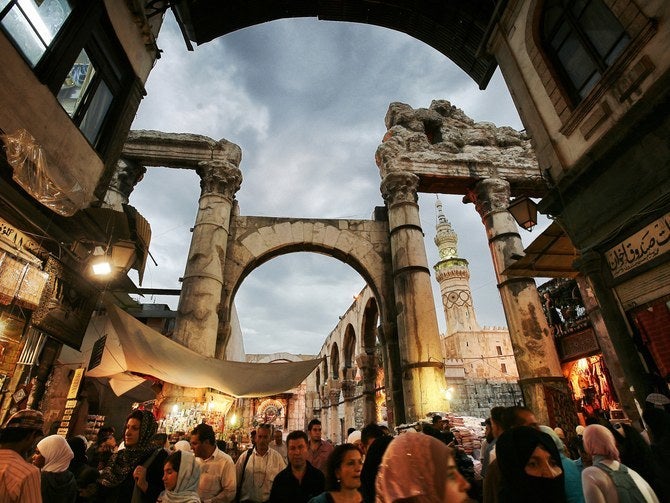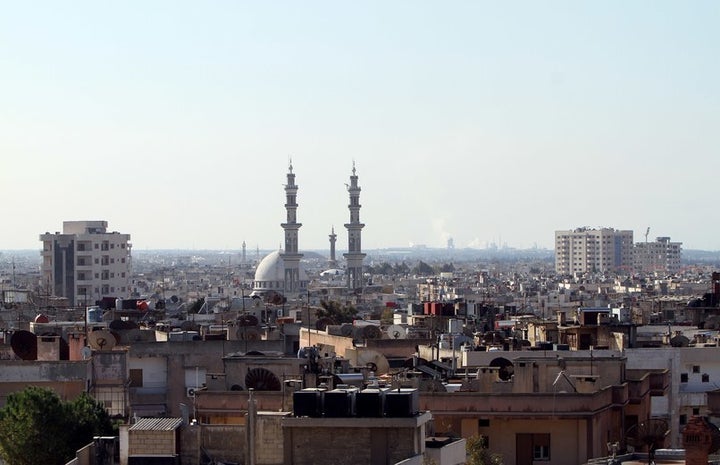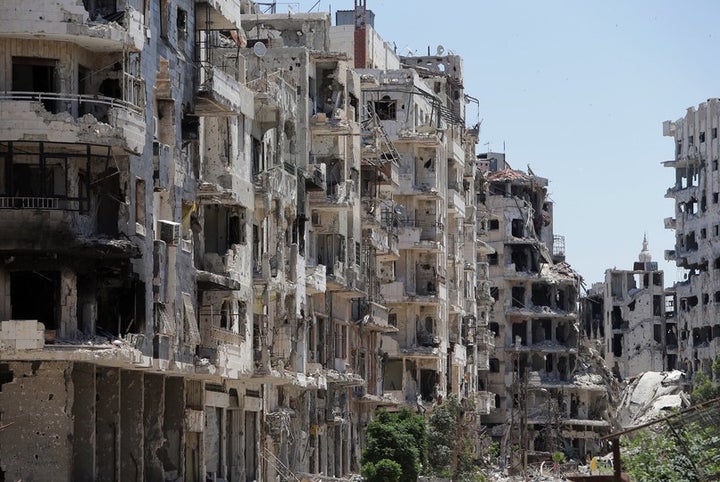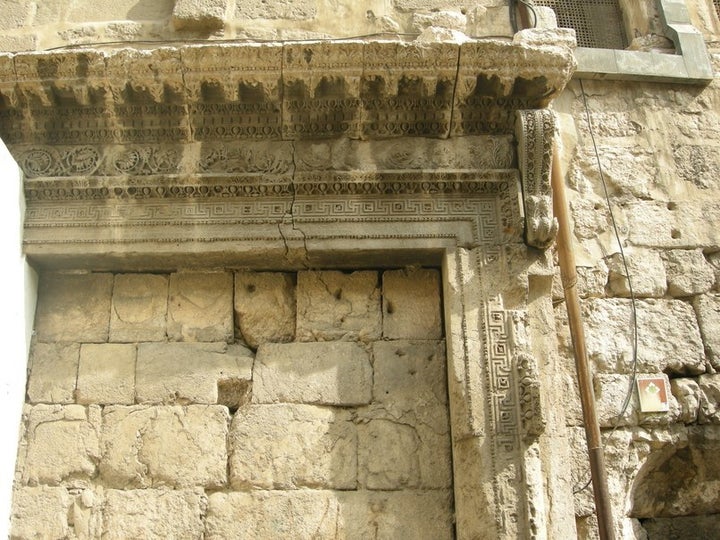For Architectural Digest, by John Gendall.

An image of pre-war Damascus, a Syrian city that includes ruins of ancient Roman structures.
As the world watches the Syrian Civil War drag on, a Syrian architect, Marwa al-Sabouni, has dealt with the ravages of conflict by thinking ahead to the postwar rebuilding process. From her home in Syria, she spoke with AD about her vision for the future.
Based in Homs, Syria’s third largest city, al-Sabouni has lived the experience of a civil war. “We basically don’t have a cityscape anymore,” she says, pointing to the fact that over 60 percent of Homs has been completely razed as a result of the conflict. There are pockets of livable neighborhoods, but these are remnants, each disconnected from the other by large, impassable swaths of rubbled areas. “Each neighborhood is surrounded by piles of collapsed buildings,” she reports. In 2012, al-Sabouni’s architecture studio, which once overlooked the main square in the central neighborhood of Old Homs, became one of those flattened buildings.

A prewar shot of Homs, Syria, in 2011.
For the last two years, Homs has been mostly spared from major conflict, except for an occasional car bomb or mortar. But normalcy is a long way off. Not only was the April 7 airstrike by the United States a mere 20 miles southeast of the city, but there are daily struggles: Electricity is rationed for a few hours, which means that even the most basic tasks — laundry or charging a phone, for example — take advance planning. There are generators, but the fuel to power them can be scarce. As al-Sabouni characterizes it, “It’s a phase between war and peace.”

Three years later, in 2014, an image shows destroyed buildings in the Homs neighborhood of Khaldiyeh, formerly held by rebel fighters and later captured by Syrian government forces faithful to Bashar al-Assad.
As with any tangled geopolitical condition, reasons abound for how the Syrian Civil War came to be. To this list, al-Sabouni would add architecture itself, charging that the built environment created some of the conditions that led to armed conflict — an argument she makes in her acclaimed book, The Battle for Home (Thames & Hudson, 2016). Whereas there had once been an urban fabric that had emerged over time, embedded in culture and place, 20th-century colonialism imposed construction systems and town planning that effectively suffocated the original city, replacing courtyard houses with concrete towers and cutting off neighborhoods into demographic ghettos.
Her concern is that a similar approach will be used once the work of rebuilding begins. “Under the name of reconstruction, there is a temptation to allow investors to build mega-projects and buildings that could erase much of what is important for people here,” she says. “I am trying to help people communicate what kind of city they want to have — to have a connection to memory, a connection to history.”
“I am not in favor of building exactly what we had before, but we should be able to assess what worked and what did not work,” al-Sabouni urges. “We should have a moment of contemplation before we start throwing up high-rise towers and concrete blocks.” One of her ideas is to reconsider building materials. As she explains, Homs is situated in a plane of rich volcanic soil, and over the centuries, its builders found in this landscape what would become one of the city’s principal building materials: black basalt. Despite its natural properties — “it’s very durable, very beautiful, and sustainable,” al-Sabouni says — it has become consigned to history, replaced by the concrete blocks that have come to define, blandly so, the landscape of Homs.
She also looks to the long-standing local tradition of architectural pattern making. To walk through Old Homs is to be amidst a context of richly ornamented surfaces, all derived from craftspeople working in a local idiom. Not only as a matter of aesthetics, but also as an economic principle (support for local artisans), al-Sabouni sees an opportunity to restore some of this tradition in the rebuilding process. She is quick to clarify that she is not advocating a kind of historical pastiche, but instead an incorporation of local materials and an interpretation of traditional patterns in modern ways.
As a kind of testament to Syria’s geopolitical complexity, one of the other characteristics of the architecture in Homs is its layering of history. These layers reference its many phases, from pre-Hellenism through the Ottoman Empire, with each leaving its distinct mark on the landscape. As al-Sabouni remarks, “It is not uncommon to have 2,000-year-old columns standing in a building with 200-year-old walls.”

According to al-Sabouni, "It is not uncommon to have 2,000-year-old columns standing in a building with 200-year-old walls."
Al-Sabouni sees this war, as tragic and challenging as it has been, as one more layer of Syria’s history. Once it is confined to the past tense, her hope is that her country will build better, more livable cities. She seems to view her personal experience in similar terms: “I am doing what I can in the moment that I’m in.”
More from Architectural Digest:
